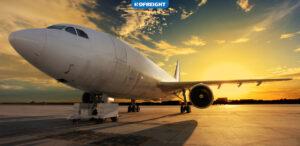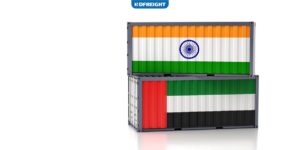An Air Waybill (AWB) is a contract between an air carrier and a shipper that outlines the terms and conditions of carriage for goods being shipped by air. The AWB also serves as a receipt for the goods being shipped and a document of title.
If you’re looking for a digital freight forwarder that can help you with your Air Waybill, then you’ve come to the right place. DFreight is a leading provider of digital shipping services, and we can help you with everything from creating your AWB to tracking your shipment. So read the whole article and learn more about AWB, the difference between Air Waybill and Bill of Lading, and how we can help you with your digital shipping needs.
Table of Contents
What is an Air Waybill (AWB)?
An Air Waybill (AWB) is a document that accompanies cargo shipped by air. It is a contract between the shipper and the airline, and it indicates that the airline has accepted the cargo and is responsible for delivering it to the destination.
Details about the shipment’s contents, the sender and recipient, the terms and conditions, and other information are all provided in AWB. The International Air Transport Association (IATA) disseminates the AWB, a standard form.
An air waybill involves three parties: the sender, the airline, and the recipient.
AWB must be completed before any goods are shipped. It becomes a legally binding document if both the shipper and the associated carrier sign it. The information must be filled out completely and accurately because it is a legally binding instrument between the parties.
Functions of AWB
Some of the key functions of AWB include providing detailed information about the shipment, the volume or weight of the shipment, the number of packages in the shipment, Contact information among all parties, acting as a receipt for the goods being shipped, and serving as a contract between the shipper and the airline. AWB also typically includes a list of any special instructions for handling the shipment.

The AWB’s Format
A typical AWB is a one-page document that is packed with significant details. The IATA created and disseminated the bill, which is used for both domestic and international shipping.
The first three copies of the document are the original, which is printed in eight sets of various colors.
The first original (green) is a copy made by the issuing carrier.
The second copy (pink) is for the consignee.
The third one (blue) is for shipper.
The fourth copy is brown and serves as a receipt and delivery confirmation.
The remaining copies are all white.
The carrier’s name, office address, logo, and 11-digit AWB number, which can be used to make reservations and monitor the progress and location of shipments, must all appear on each air waybill.
Electronic Air Waybill (e-AWB)
An electronic air waybill (e-AWB) is an electronic version of the paper air waybill that is used to track the shipment of goods by air. The e-AWB is a standardized waybill that is created and used by airlines, freight forwarders, and other parties involved in the shipment of goods by air. The e-AWB allows for the tracking of shipments in a more efficient and accurate manner, and it also reduces the paper clutter associated with traditional paper waybills.
Although paper air waybill documents are still recognized, IATA today mostly uses electronic air waybills. The same information that is needed for the paper version is also communicated in the electronic version.
Air Waybill vs. Bill of Lading
Although the air waybill and the bill of lading are similar, they have some key distinctions. The two should not be substituted for one another.
Both of these documents are crucial for international trade. The two documents, which serve as legal agreements between the carrier and the shipper of the goods, include specifics about the commodities, how to handle them, and where they are going.
The title to the goods is where the air waybill and bill of lading diverge most. A bill of lading serves as the goods’ title document. It is the acceptance of the goods by the shipping firm with the understanding that only the party named on the bill of lading would get the items upon arrival.
The site of delivery is indicated on an air waybill, which is a carrier’s or agent’s receipt for the goods.
Conclusion
If you’re looking for a digital shipping company that offers Air Waybills, look no further than DFreight. We make it easy to ship your goods by air. Our digital shipping company offers an easy-to-use Air Waybill (AWB) that will make your shipping experience easy and efficient. Contact us today to learn more about our services.
How is AWB used?
AWB is used to document the carriage of goods by air. It is a non-negotiable document, meaning that the terms and conditions of carriage are set by the airline and cannot be changed by the shipper.
What are the benefits of using AWB?
AWB provides a clear and concise document that outlines the terms of carriage for your shipment. This can help to avoid any misunderstandings or disputes that may arise during or after the shipment.
How do I get AWB?
You can typically get AWB from the company that you are shipping with. They will typically have a template that you can fill out, or you can create your own. If you would like to get an air waybill from DFreight, please contact us.














